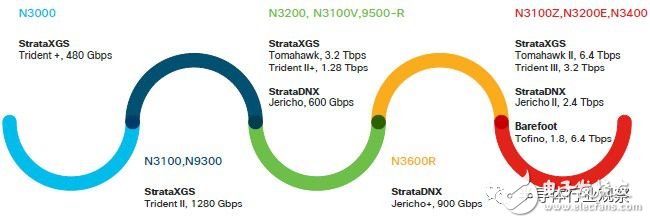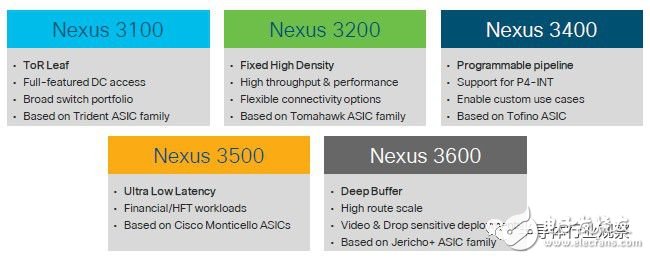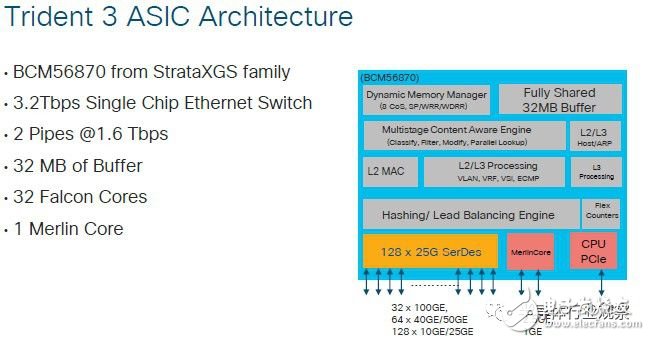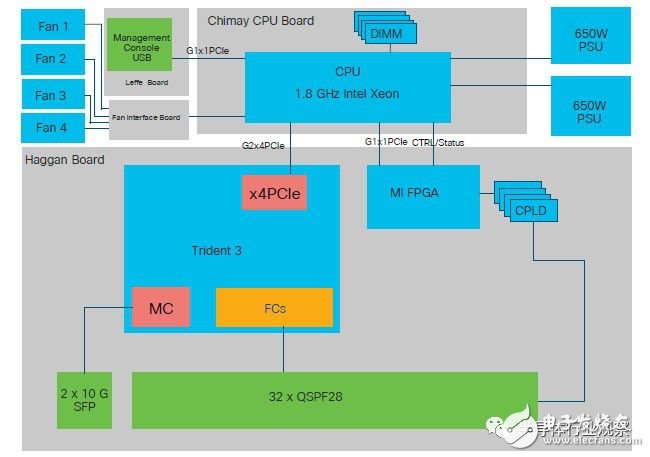|
在PPT中详细描述并体现出我们倡导的那种开放。虽然我们无法参加思科Live,但这正是我们想要看的。Taifeshesmatian虽然没有谈论Nexus 9000芯片,但据我们所知,该芯片拥有思科自主研发的“Alpine”和“Northstar”ASIC,并且其应用中心基础架构(ACI)软件定义的网络扩展已经出炉。即使他没有详细讨论商业Nexus 9200、9300和9500交换机中使用的交换芯片。但是下面的图表确实提到了它们:
如你所见,在过去的几年里,思科采用了Broadcom的各种芯片——Trident、Tomahawk和Jericho系列。最近,Nexus 3400采用了Barefoot Networks的Tofino芯片。下面的图表总结了各种Nexus 3000交换机的目标市场和功能集:
这便是Taifeshesmatian总结的PPT的奇妙之处。它实际上提供了Broadcom和Barefoot未透露的一些芯片技术细节。(衷心感谢你。)
Let’s take them in order, starting with the Nexus 3000 family. The Nexus 3100 was based on Broadcom’s “Trident-2” ASICs, which delivered 1.28 Tb/sec of aggregate bandwidth and had a 12.2 MB buffer. With the Nexus 3100-V, Cisco moved on up to the “Trident-2+” ASIC, which boosted the buffer to 16 MB and had the same bandwidth. The Nexus 3100-Z adopted the “Trident-3” chip from Broadcom, which boosted the bandwidth by 2.5X to 3.2 Tb/sec and the buffer by 2X to 32 MB.
让我们依次看一遍。Nexus 3100基于Broadcom的“Trident-2”ASIC,提供1.28Tb/秒的总带宽,并拥有12.2MB缓冲区。在新的Nexus 3100-V上,思科采用了全新的“Trident-2+”ASIC,该产品将缓冲区提升至16MB,并具有相同的带宽。Nexus 3100-Z则采用了Broadcom的“Trident-3”芯片,该芯片将带宽提升2.5倍,达到3.2Tb/秒,缓冲区提升2倍,达到32MB。
下图Trident-3芯片的框图:
在这个1U交换机中,32个以100Gb/秒速率运行的端口都有一个“Falcon”核心,还有一个10Gb/秒的“Merlin”核心用于管理。Trident-3芯片有两个数据包处理流水线,每个流水线都有16个Falcon核心,这些核心被分成两组Falcon SerDes。每四分之一的SerDes都可以访问ASIC传输带宽的四分之一。
下图是Trident-3在Nexus 3100-Z交换机中的实际应用:
|




 (责任编辑:admin)
(责任编辑:admin)